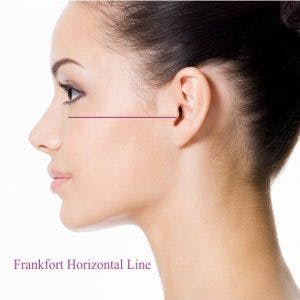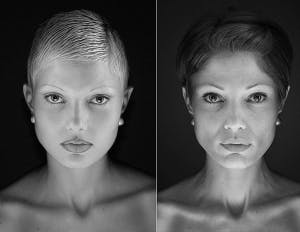
All reputable plastic surgeons have “before and after” photos. These serve as their portfolio, much in the same way an artist shares their work. Before selecting a plastic surgeon, it is important to view these images. Here are five things to note when viewing plastic surgery before and after photos.
1. Look for photos of patients that are close to your age and who have characteristics or conditions similar to yours. If you are interested in facial procedures, does the patient in the photo have a similar amount of facial sagging, loose neck skin or eyelid drooping? If you are seeking breast surgery, find women whose breasts are shaped like yours. Are the breasts far apart on the chest? Close together? Do the breasts sag and appear higher on the chest after the procedure? Perhaps you need a breast lift in addition to a breast augmentation. As the saying goes, you can’t compare apples to oranges.
2. Consistent patient poses are extremely important in analyzing the results of before and after surgery. Patients should be photographed in a variety of positions. At Changes Plastic Surgery & Spa, each patient is uniformly photographed before and after in a minimum of five different poses. They are: frontal view, ¾ quarter view (called an oblique view) taken with the patient looking left and right, and profile views (called a lateral view), again taken with the patient facing left and right.
When viewing before and after lateral and oblique views, note the tilt of the head of the patient. Good photography relies on an imaginary line which can be drawn from the tragus of the ear through the lower point of the eye socket. This is called the Frankfort Horizontal Line. Both before and after images should align on these guide points. Anything other than this results in the patient head being tilted up or down which can significantly affect the amount of neck skin laxity and facial aging. Proper poses and adherence to the Frankfort Horizontal line are especially important in rhinoplasty cases for pre-surgical analysis and planning.
3. Lighting is another factor that may affect or distort the results in before and after photos. Consistent camera settings, lighting and establishing a uniform distance from photographer to patient can help to ensure that shadows do not play for or against the surgical results. The model below was photographed using the same lighting and camera settings 14 years apart. This is a great example of controlled consistency (Instagram photo not the property of Changes).

4. Is there symmetry? It may seem obvious, but good plastic surgery before and after photos will show if the patient exhibits symmetrical face or body features and if the surgeon has improved any asymmetry post-procedure. Symmetry is especially important in eyelid surgery (blepharoplasty), fat grafting, rhinoplasty, breast augmentation, and breast lift. Our eyes view symmetry as attractiveness. It is also a sign of good plastic surgery results.
5. Visible scars are never desirable. A good plastic surgeon will make every effort to conceal incisions. Scars should never be visible in a facelift. Even for men, facelift scars should be hidden so that sideburns, beards, and mustaches remain untouched. Pay close attention to breast surgery before and after photos. Even incisions around the nipple (peri-areolar) should be performed expertly to minimize the appearance of scars. Tummy tuck scars should be hidden beneath the bikini line. Take close scrutiny of the before and after photos to ensure your plastic surgeon’s work is “tidy”.
A study published in the Aesthetic Surgery Journal* queried patients on what they look for when researching a plastic surgeon. Breast augmentation patients listed before and after photos as the most valuable attribute in their research. Tummy tuck and breast surgery patients rated patient testimonials first with before and after images an important second.
The Changes Plastic Surgery & Spa tagline is Artistry with Precision. Coined because of a philosophy of providing technical excellence with aesthetic results, Dr. Gilbert Lee provides before and after images that positively reflect these five attributes and allow patients to evaluate his skill and artistic accomplishments. View our gallery of before and after pictures here.
* Aesthetic Surgery Journal (2017, Vol 37(1) 105-118)

